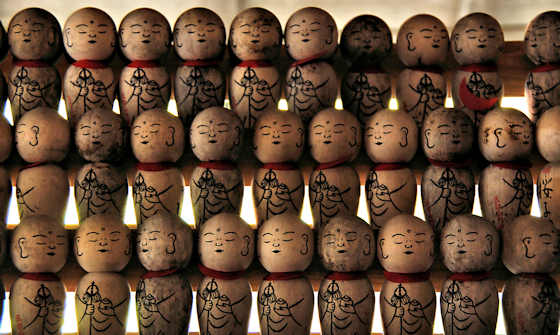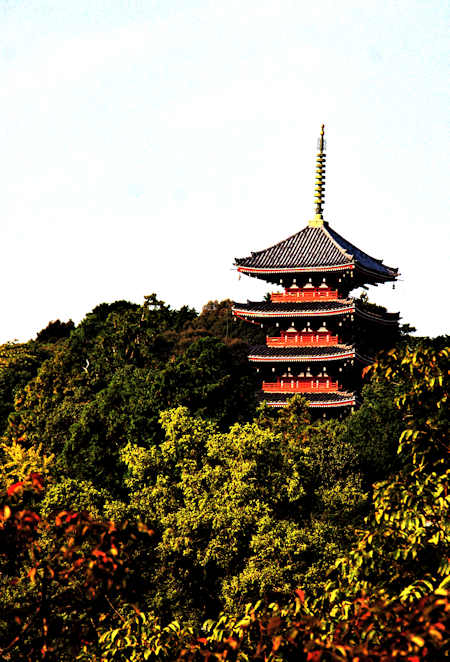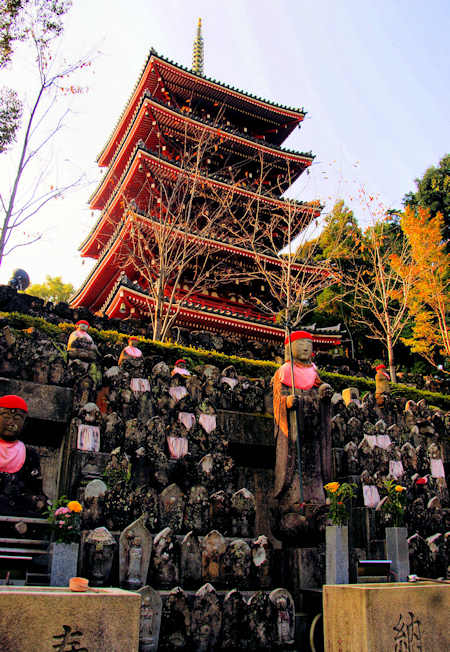Sunday, May 1, 2016
Thursday, April 28, 2016
Hiyoshi Shrine, Nogata

One of the pairs of komainu were unusual, one standing upright, and the other, pictured here, doing a "handstand". These types can often be seen in a small ceramic form on shrine or temple roofs.

There was no signboard at the shrine so I have no idea about its history or secondary shrines in the grounds, but in one small shrine I did find a worn, wooden figure, though I dont know who it represents.
Sunday, April 24, 2016
Chikurinji Temple 31 on the Shikoku Pilgrimage
Its the onlly temple on the Shikoku Pilgrimage that is dedicated to Monju Bosatsu, and legend has it that Gyogi carved the statue.
Friday, April 22, 2016
Nogata Memorial Hall of Coal
Wednesday, April 20, 2016
Flowers of Shikoku part 3
Seeing lots of flowers in recent weeks prompts me to post these pics of flowers encountered along my walk on the Shikoku Pilgrimage.
I didn't walk it in the spring, but the other 3 seasons, so these photos are from late autumn and winter.
Of course not everything encountered in Japan is real..... fake flowers being particularly popular at temples......
Though lots of flowers are grown under glass year round to supply the need....
In late winter when I finished the pilgrimage the camelias were out. The two previous posts of Shikoku flowers are here and here
Monday, April 18, 2016
Taga Shrine Nogata
Next stop was the nearby Coal Museum as this was a major coal-producing region of Japan until the mid 20th century
Monday, April 11, 2016
Ensei-ji & Konpira-sha
Enseiji Temple, located down a small side street in Hagi is an example of something that was once the norm but is now unusual, it is both a temple and a shrine on the same site.
It is home to the biggest stone lantern in the prefecture as well as a huge Tengu mask. It is famous for being the temple where Ito Hirobumi, Japans first Prime Minister, studied as a child. I did hear that his uncle was a priest here.
The reason given why the shrine and temple were not forced to seperate is that they were holding writings of an imperial princess from several centuries earlier. As stated it doesnt make sense, but they were not forced to separate.
The shrine is a Konpira, a branch of the famous one on Shikoku known for protection for sea journeys. The temple part is Shingon and the honzon is a Jizo. The temple was founded in the 13th Century, a long time before the castle town was built.
Friday, April 8, 2016
More Monkeys of Koshinsha
I am intrigued by the eclectic collections of figures left at various kinds of "folk" altars around Japan.
So here are some more of the monkeys left at Koshinsha in Nogata.
Toys and dolls can often be found alongside icons from Shinto, Buddhism, Hinduism and even sometimes Christianity.
Sarubobo dolls and ema were also prevalent.
Labels:
koshin,
kyushu108,
monkey,
sarutahiko,
Shrine
Subscribe to:
Posts (Atom)










































